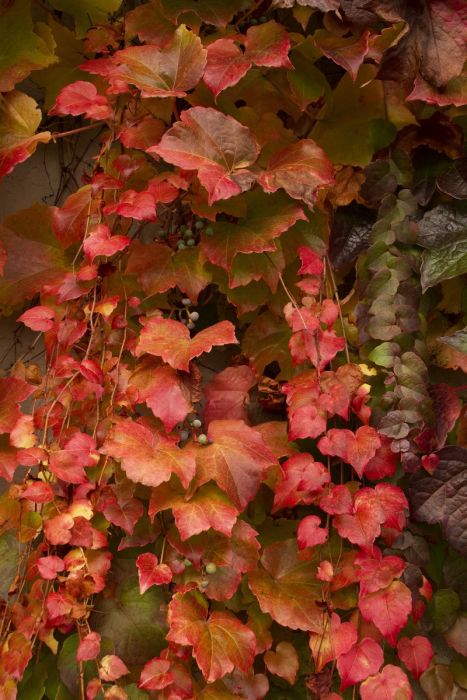Parthenocissus, Boston Ivy



Out of stock
Coming soon, still growing- Sun Preference
- Full-Sun, Part-Sun, No-Sun
- Bloom Time
- April, May
Description
One of the most popular of all vines for screening, from fences and arbors to homes and buildings; very attractive three-lobed leaves turn orange and red in fall; small dark blue berries; self-clinging, very tough and adaptable
- Zone: 4-9
- H 30-50'
Minnesota's Largest Selection of Shrubs
Elevate your landscaping with Gertens' unmatched variety of shrubs! Selecting the right shrubs for your backyard can enhance its beauty and functionality. Consider factors like sunlight, soil type, and mature size when choosing shrubs. For sunny areas, flowering shrubs like roses or hydrangeas can add color and charm. In shady spots, opt for shrubs like azaleas or hostas. Evergreen shrubs provide year-round interest and privacy, while deciduous shrubs offer seasonal color changes. At Gertens, we offer a wide selection of shrubs to suit every backyard need.
Details
Height: 40 feet
Spread: 24 inches
Sunlight:![]()
![]()
Hardiness Zone: 4a
Other Names: Japanese Creeper
Description:
One of the most popular of all vines for screening, from fences and arbors to homes and buildings; very attractive three-lobed leaves turn orange and red in fall; small dark blue berries; self-clinging, very tough and adaptable
Ornamental Features
Boston Ivy has dark green foliage throughout the season. The serrated lobed leaves turn an outstanding red in the fall. Neither the flowers nor the fruit are ornamentally significant.
Landscape Attributes
Boston Ivy is a dense multi-stemmed deciduous woody vine with a twining and trailing habit of growth. Its average texture blends into the landscape, but can be balanced by one or two finer or coarser trees or shrubs for an effective composition.
This woody vine will require occasional maintenance and upkeep, and can be pruned at anytime. It is a good choice for attracting birds to your yard, but is not particularly attractive to deer who tend to leave it alone in favor of tastier treats. It has no significant negative characteristics.
Boston Ivy is recommended for the following landscape applications;
- Hedges/Screening
- General Garden Use
Planting & Growing
Boston Ivy will grow to be about 40 feet tall at maturity, with a spread of 24 inches. As a climbing vine, it tends to be leggy near the base and should be underplanted with low-growing facer plants. It should be planted near a fence, trellis or other landscape structure where it can be trained to grow upwards on it, or allowed to trail off a retaining wall or slope. It grows at a fast rate, and under ideal conditions can be expected to live for approximately 20 years.
This woody vine does best in full sun to partial shade. It is very adaptable to both dry and moist locations, and should do just fine under average home landscape conditions. It is not particular as to soil type or pH, and is able to handle environmental salt. It is highly tolerant of urban pollution and will even thrive in inner city environments. This species is not originally from North America.
| SKU | Container Size |
| V0335 | #1 Container (1 Gallon) |
| V0345 | #5 Container (5 Gallon) |
* Not all container sizes may be available at this time. See store for details on specific container size availability.
More Information
| Gerten Grown Plants | Gerten Grown Plants |
|---|---|
| Bloom Time | April, May |
| Sun Preference | Full-Sun, Part-Sun, No-Sun |
| Mature Height (Range) | 25 - 50 feet |
| USDA Hardiness Zone | 4, 5, 6, 7, 8, 9 |
| Common Family Name | Parthenocissus |


